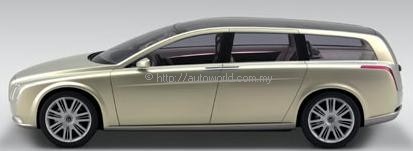VCC Powertrain
The VCC demonstrates that high performance no longer needs to mean sacrifices in fuel economy nor causing a high environmental impact. Its concept engine, an in-line direct-injected 6-cylinder turbocharged engine with a displacement of 2.6 litres, produces 184 kW/250 hp – yet consumes no more than 15.4 kms/litre (43 mpg). Impressive for a car topping 1300 kgs, and achieved through a range of new technologies.
“New innovative engine and transmission technology makes this extremely low figure possible in a ten year perspective”, states Derek Crabb, Vice President Powertrain Engineering at Volvo Car.
The engine features new turbo technology that puts the emphasis on combustion efficiency. This technology makes greater use of positive boost pressure to clear the combustion chamber of all traces of exhaust gases, thus improving the efficiency rating. The higher compression ratio is on a par with that of a non-turbo engine.
There is also ‘Direct Start&Stop’, which enables the engine cuts out when the car stops, for instance at traffic lights or in a stationary line of traffic. When it is time to move off again and the clutch is at the drag point, fuel is injected directly into the engine, which ignites the mixture immediately and gently accelerates the car.
With Compression Auto Ignition (CAI), the benefits of a big engine are harnessed to cut fuel consumption and lower exhaust emissions, however contradictory that might at first sound. The system creates a lean and homogeneous fuel/air mixture that is compression-ignited when the engine is being run on part load and at low to medium rpm.
Automated Shifted Manual is a regular manual gearbox that can be shifted automatically with the help of electronically-controlled actuators. The driver can thus use it exactly like a conventional automatic transmission. However, since a manual gearbox has a higher efficiency rating than an automatic – because the frictional losses are lower – the end-result is lower fuel consumption.
The torque-loss problem that arises at the moment of shifting in an automated manual gearbox has been solved in the concept engine with its Electric Drive (ED). The ED unit, which is powered by a separate 42V battery, also provides extra propulsion power at low revs, before the turbocharger has reached the necessary boost, thus eliminating the problem of turbo-lag.
Electric Drive also gives the battery a free charge of energy. When the driver lifts off the accelerator to reduce speed, the car’s forward motion powers the ED unit which in turn recharges the 42V battery. This energy can be used, for instance, to drive the VCC for short distances on electric power alone, for example at very low speeds when crawling forward in congested traffic. The ED unit can be installed either on the driven axle or directly on the rear wheels.
 |

























